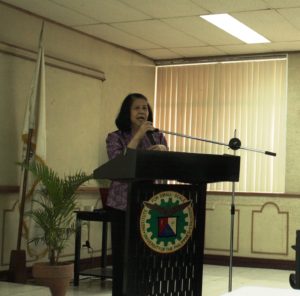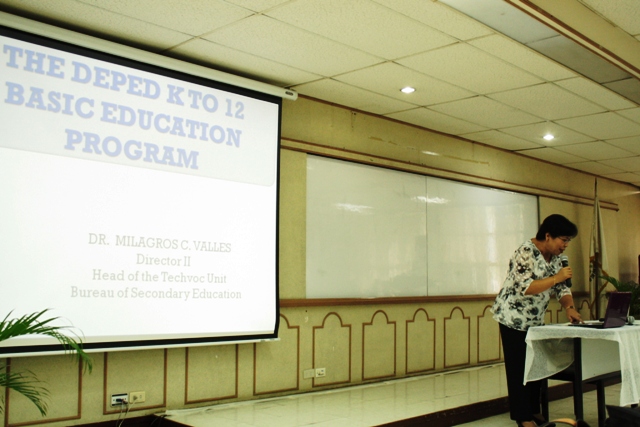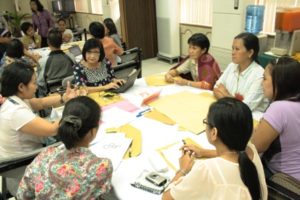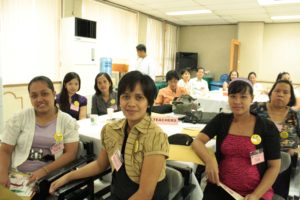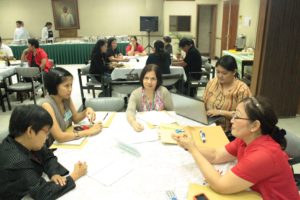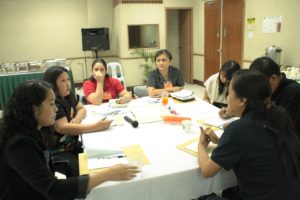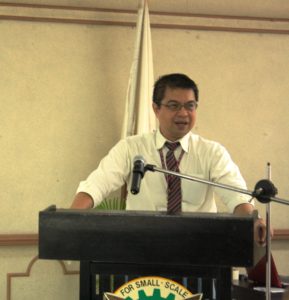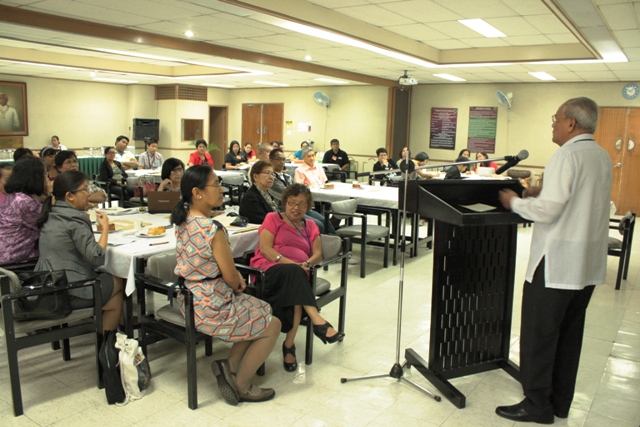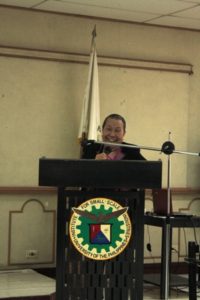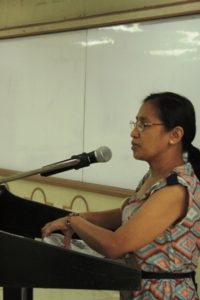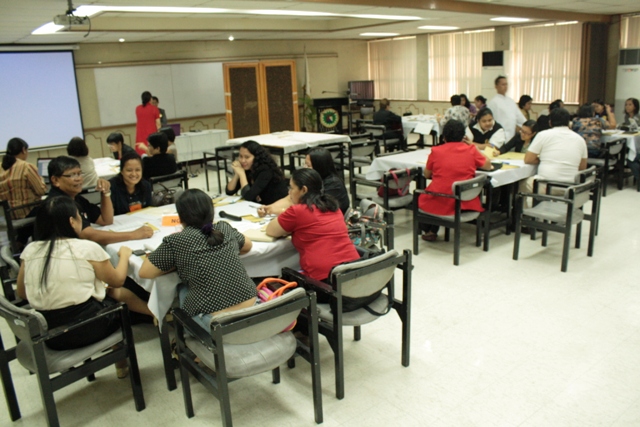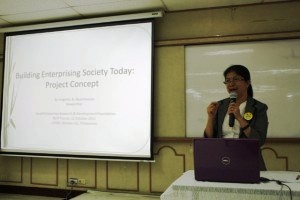 The “Building Enterprising Society Today” (BEST) project formally kicked off yesterday, October 12, at the UP Institute for Small-Scale Industries, Diliman, Quezon City with a “Bahaginan sa BEST,” a gathering of teachers, parents, members of academe, NGOs, government officers and other stake holders to discuss the project concept and what can be done sectorally and jointly to ensure the success of an entrepreneurship education initiative like BEST.
The “Building Enterprising Society Today” (BEST) project formally kicked off yesterday, October 12, at the UP Institute for Small-Scale Industries, Diliman, Quezon City with a “Bahaginan sa BEST,” a gathering of teachers, parents, members of academe, NGOs, government officers and other stake holders to discuss the project concept and what can be done sectorally and jointly to ensure the success of an entrepreneurship education initiative like BEST.
A study on entrepreneurship education for kids at grade-school level implemented by the Small Enterprises Research and Development Foundation, the BEST project aims to develop materials and sample lesson plans that integrate entrepreneurship concepts and values into the K to 6 curriculum and pilot-run these in two schools in Metro Manila.
As with most entrepreneurship education programs, the expected outcome is heightened entrepreneurial mind sets leading to enhanced employability, increased business start-ups, and greater student engagement.”
The entrepreneurially-enriched curriculum will seek to marry two different learning settings: the traditional, formal school culture and the new. informal, enterprising culture.
Nida Lavador, BEST project director distinguished the two: “While the former is hierarchical, orderly and predictable; the latter is free, intuitive and creative. In the traditional school setting, students are expected to follow school-imposed procedures, while in an enterprising environment, students can sometimes “do it their way.” Learning modes differ too: enterprise education is predominantly learning by doing; the other is basically rote learning.
The premise in enterprise education is that to produce enterprising young people, teachers and school administrators need to be enterprising, too. The enterprising mode should also be imbibed by other stakeholders: the parents, the community, NGOs, local governments.
Angelita Resurreccion, lead project researcher, cited entrepreneurship education models adopted in other countries like Korea, Japan and Australia. “It is high time we developed a Philippine model; the BEST project is in that direction.”
A home-grown model is essential because culture is at the core of the learning process, she said. “All concepts should be connected to reality and real life situations,” she underscored. “This is why the role of teachers is central. They are the facilitators, the mentors and guides who see to it that learning does not end in the classroom.”
The teacher should be able to share power with the students in the classroom and design activities that would engage the students even outside the classroom walls.
Lavador and Resurreccion explained why entrepreneurship education should be started early, at K level.
“We in the UP ISSI and SERDEF have been training adults to be entrepreneurs in the past 40 years,” according to Lavador. “We have at some point come to a realization it is best to inculcate entrepreneurship values during the early formative years, when the human mind is at its most impressionable and malleable.” This is because entrepreneurship is first and foremost a mind set, she adds.
Resurreccion’s take is short and in the vernacular: “Kung ano ang kinamulatan siya ding pagkakatandaan” which roughly translated means “whatever you grew up with will be with you until old age.”
One of the major challenges for the project is how to enrich the basic curriculum with entrepreneurial inputs without adding undue pressure to the already heavy load of teachers. BEST will seek to do this by training teachers and giving them tools that are both teacher and learner-friendly.
Resurreccion concluded by emphasizing that entrepreneurship education is not only for those who will eventually put up their business but rather for all young people, regardless what their career path will be, including the professions. “Even those who go to college need entrepreneurship concepts and values. Entrepreneurship learning is not inferior; it requires both left and right brain thinking.”
Milagros Valles of the Department of Education briefed the audience on the new K to 12 system in basic education where entrepreneurship is inculcated not as a separate subject but integrated in almost all subject areas. She cited in particular the technology-vocational program which she says is “heavy on entrepreneurship.”
In the small group discussions that followed the presentations, teachers, parents, the academe, NGOs and government discussed the challenges that await their particular sector or group in the collaborative effort to make entrepreneurship education projects like BEST succeed.
UP ISSI Director and SERDEF Executive Director Nestor Raneses welcomed the participants to the UP ISSI, known as “the center of excellence for the development and advancement of entrepreneurship.” He took the occasion to apprise the audience with what the Institute has done and is doing in the field of entrepreneurship education. He also cited a 2009 report by the Global Education Initiative of the world Economic forum which confirmed the essential role entrepreneurship education plays in shaping attitudes, skills and culture – from the primary level up.
In his keynote address, SERDEF President Paterno V. Viloria described the BEST project as a “novel step to promote entrepreneurship, which goes beyond developing skills into creating the right attitudes and mind sets.” He expressed confidence that with initiatives like BEST, “we will see an enterprising next generation who will catalyze the building of a prosperous, progressive, self-sufficient and enterprising country.”
Dr. Herminia Fajardo, SERDEF Trustee and chair of the Research and Information Committee, delivered the closing address.
May Cinco, BEST Research Officer, emceed the program.
Also present during the Bahaginan sa BEST were SERDEF Chairman Francisco Floro and Roosevelt Colleges President Dr. Romeo de la Paz.

